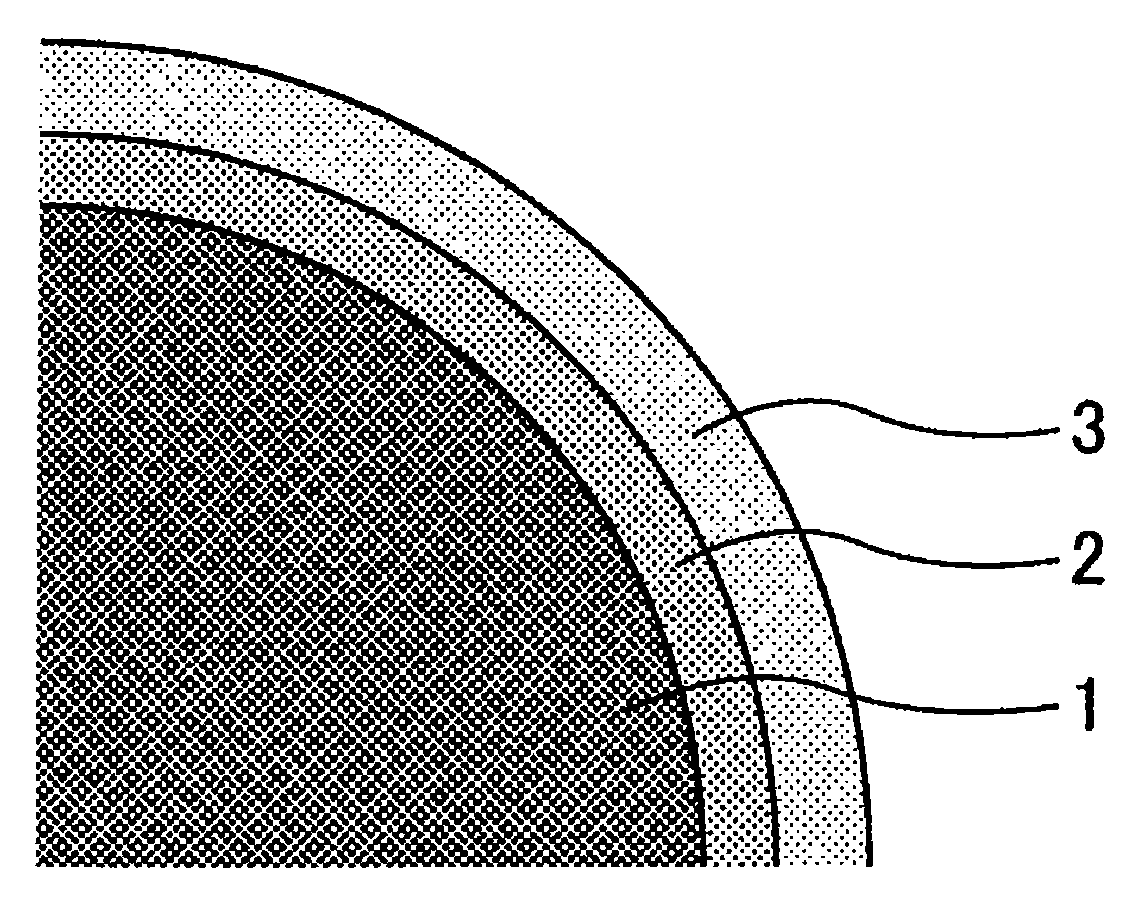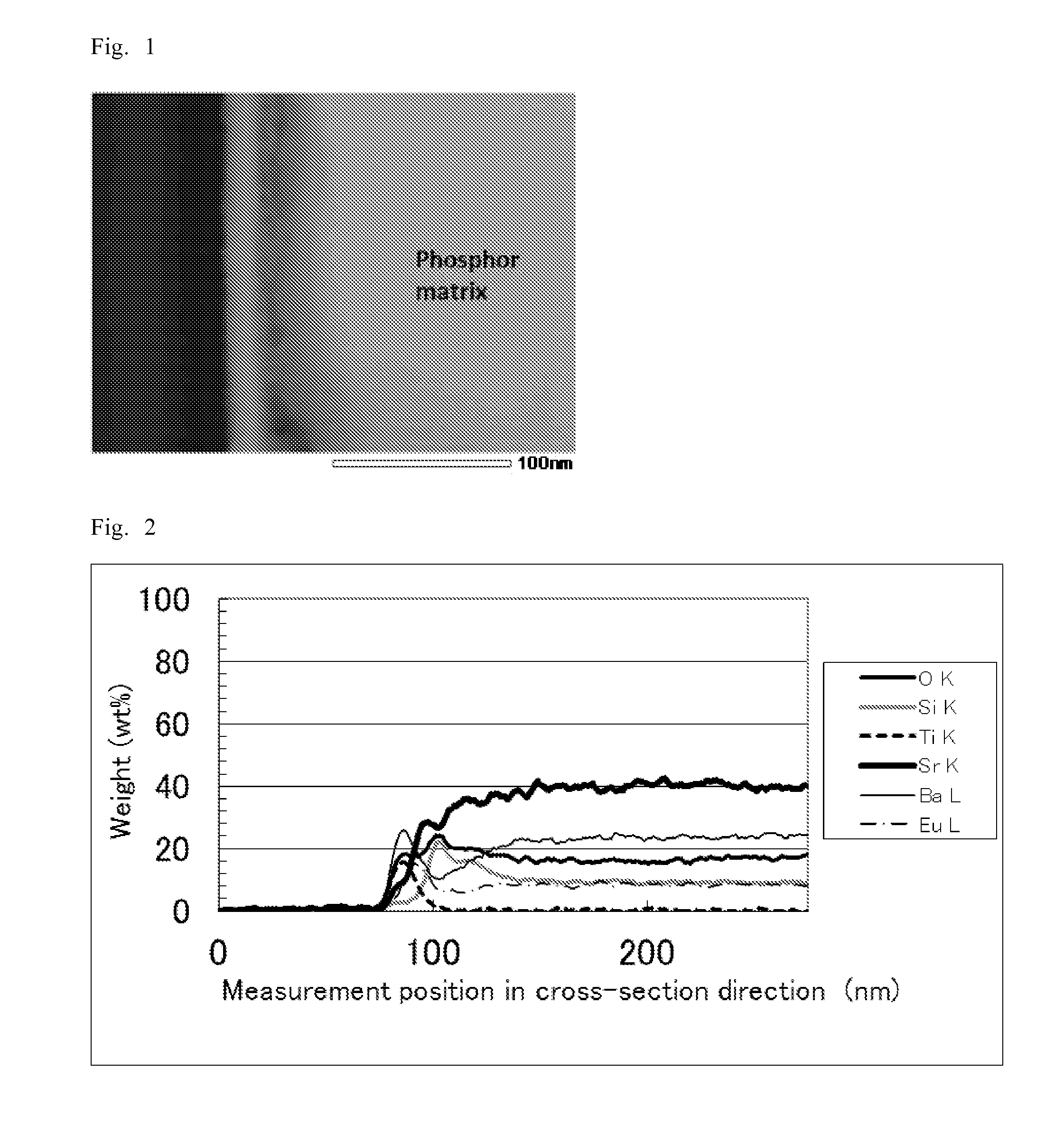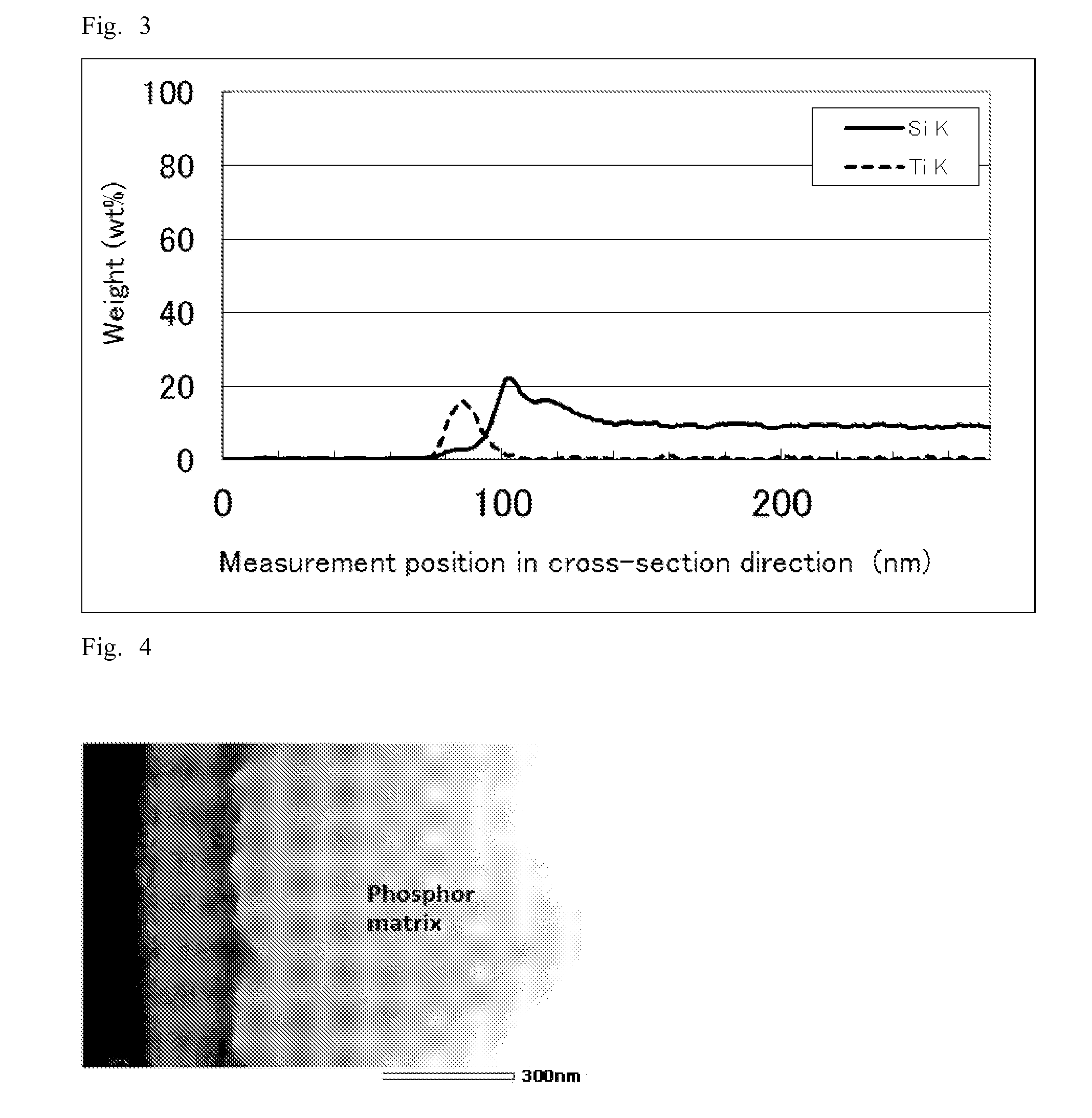Surface-treated fluorescent material and process for producing surface-treated fluorescent material
a technology of surface-treated fluorescent materials and fluorescent materials, which is applied in the field of surface-treated phosphors, can solve the problems of degradation of properties of silicate phosphors having alkaline earth metal elements, poor durability, and easy decomposition and deterioration of the surface of such silicate phosphors, and achieves excellent moisture resistance, no decomposition and deterioration, and no degradation of brightness.
- Summary
- Abstract
- Description
- Claims
- Application Information
AI Technical Summary
Benefits of technology
Problems solved by technology
Method used
Image
Examples
example 1
[0167]As a phosphor matrix, a green silicate phosphor (25 g) with a median particle size (D50) of about 16 μm (main component: (Sr,Ba)2SiO4:Eu2+, emission wavelength: 529 nm) was added to a mixed aqueous solution (500 ml) including 0.1 mol / L ammonium fluorotitanate ((NH4)2TiF6) and 0.1 mol / L boric acid. The resulting mixture was stirred to sufficiently disperse the phosphor and the reaction was carried out at 35° C. for two hours. After the reaction, the mixture was subjected to filtration and rinsing to collect the phosphor. The resulting phosphor was vacuum dried at 120° C. for one hour to give a surface treated phosphor.
[0168]“Measurement of thickness of covering layer and elemental composition analysis in the cross-sectional direction” were performed on the resulting surface treated phosphor by the following method.
[0169]The results show that an about 53-nm-thick surface treatment layer is formed on the surface of each phosphor matrix.
[0170]With respect to the surface treated ph...
example 2
[0176]As a phosphor matrix, a green silicate phosphor (25 g) with a median particle size (D50) of about 16 μm (main component: (Sr,Ba)2SiO4:Eu2+, emission wavelength: 529 nm) was added to an aqueous solution (500 ml) including 1.0 mol / L ammonium fluorotitanate ((NH4)2TiF6). The resulting mixture was stirred to sufficiently disperse the phosphor and the reaction was carried out at 35° C. for 10 minutes. After the reaction, the mixture was subjected to filtration and rinsing to collect the phosphor. The resulting phosphor was vacuum dried at 120° C. for one hour to give a surface treated phosphor.
[0177]“Measurement of thickness of covering layer and elemental composition analysis in the cross-sectional direction” were performed on the resulting surface treated phosphor by the same method as Example 1. The result showed that an about 214-nm-thick surface treatment layer was formed on the surface of the phosphor matrix.
[0178]The elemental composition analysis in the cross-sectional dire...
example 3
[0181]As a phosphor matrix, a green silicate phosphor (2.4 g) with a median particle size (D50) of about 16 μm (main component: (Sr,Ba)2SiO4:Eu2+, emission wavelength: 529 nm) was added to a mixed aqueous solution (500 ml) including 0.05 mol / L ammonium fluorotitanate ((NH4)2TiF6) and 0.2 mol / L boric acid. The resulting mixture was stirred to sufficiently disperse the phosphor and the reaction was carried out at 35° C. for two hours. After the reaction, the mixture was subjected to filtration and rinsing to collect the phosphor. The resulting phosphor was vacuum dried at 120° C. for one hour to give a surface treated phosphor.
[0182]“Measurement of thickness of covering layer and elemental composition analysis in the cross-sectional direction” were performed on the resulting surface treated phosphor by the same method as Example 1. The result showed that an about 35-nm-thick covering layer was formed on the surface of the phosphor matrix.
[0183]The elemental composition analysis in the...
PUM
| Property | Measurement | Unit |
|---|---|---|
| electric conductivity | aaaaa | aaaaa |
| temperature | aaaaa | aaaaa |
| temperature | aaaaa | aaaaa |
Abstract
Description
Claims
Application Information
 Login to View More
Login to View More - R&D
- Intellectual Property
- Life Sciences
- Materials
- Tech Scout
- Unparalleled Data Quality
- Higher Quality Content
- 60% Fewer Hallucinations
Browse by: Latest US Patents, China's latest patents, Technical Efficacy Thesaurus, Application Domain, Technology Topic, Popular Technical Reports.
© 2025 PatSnap. All rights reserved.Legal|Privacy policy|Modern Slavery Act Transparency Statement|Sitemap|About US| Contact US: help@patsnap.com



